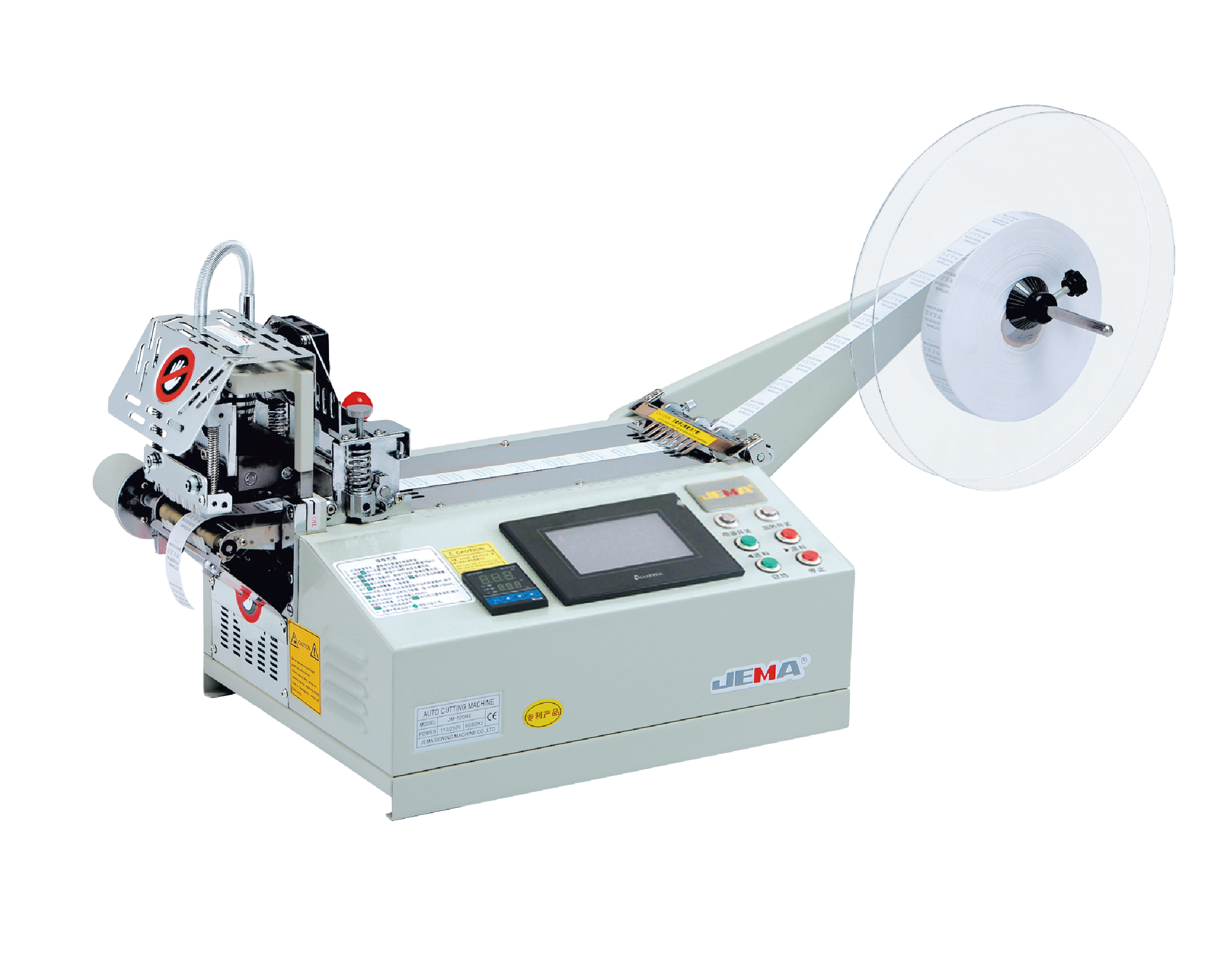Computer tape cutting machine (hot knife) JM-120H
Fully automatic cutting, simple operation, wide application range, high cutting quality, c...
Understanding the Importance of Simultaneous Multi-Width Cutting
In the textile and garment industries, efficiency and precision are key factors in maintaining productivity and ensuring product quality. When working with elastic tapes, which vary widely in width and material characteristics, the need to cut multiple tape types simultaneously can become a vital part of a high-throughput production line. An Elastic Tape Cutting Machine, often used in such manufacturing settings, is designed to handle elastic materials with accuracy. However, whether this equipment can cut tapes of different widths at the same time depends on its structural design, control system, and blade configuration.

Key Mechanical Features for Multi-Width Capability
The capacity to cut elastic tapes of varying widths in parallel is heavily influenced by the configuration of the feeding system, the adjustability of the guide rollers, and the flexibility of the cutting blade mechanism. Machines that are equipped with individually adjustable feed rollers or independent lanes for each tape width are better suited to handling multiple widths. These features help maintain alignment and tension across different tape sizes, which is essential for achieving uniform cutting without deformation or misalignment.
Blade structure is also crucial. In some machines, the cutting blade is a single rotary or guillotine-style knife, which may be limited in its ability to differentiate between widths. More advanced models offer modular or multiple blade assemblies, where each cutting unit can be adjusted or re-positioned to match the width and spacing of various elastic tapes. This flexibility enables the machine to cut several tapes of different dimensions in one pass, improving efficiency and reducing manual intervention.
Control System Flexibility and Programming Support
Modern cutting machines often integrate digital control systems that allow for programmable cutting lengths, speeds, and intervals. For simultaneous cutting of different widths, the software must also support individual lane control or multi-track settings. This includes parameters such as individual speed synchronization, separate counting mechanisms, and adjustable cutting intervals for each tape width. When these digital features are combined with a versatile mechanical setup, the machine can effectively support complex cutting tasks.
Additionally, sensors and vision systems can be integrated to ensure that each tape is positioned correctly before cutting. This is particularly important when dealing with narrow or stretchy tapes that may shift during the feeding process. Such precision mechanisms ensure that each tape is cut to its designated size and shape, even when multiple widths are being processed together.
Practical Limitations and Operational Considerations
Despite technological advances, not all cutting machines support multi-width cutting natively. Some may require customization or additional components to accommodate diverse widths. Operators also need to consider how the tapes are loaded and how tension is maintained across materials of varying elasticity and thickness. Without uniform tension, the risk of skewed cuts or product defects increases significantly.
Maintenance is another factor. Machines handling diverse widths in parallel are exposed to increased mechanical stress, especially on adjustable components and cutting blades. Regular calibration, alignment checks, and blade replacement schedules must be implemented to sustain performance and avoid downtime.
Feasibility and Efficiency of Multi-Width Tape Cutting
The ability to cut different widths of elastic tapes simultaneously largely depends on the machine’s mechanical and digital capabilities. While standard machines may offer limited support, higher-end or customized models are often built to handle complex multi-width tasks efficiently. The investment in such machines can cause significant productivity gains and reduced labor costs, particularly in large-scale production environments. Careful assessment of specific operational needs and machine features is essential to ensure that the equipment chosen aligns with production goals and material diversity

Fully automatic cutting, simple operation, wide application range, high cutting quality, c...

Fully automatic cutting, simple operation, wide application range and high cutting quality. Cold ...

Fully automatic cutting, simple operation, wide application range and high cutting quality. ...

Features The JM-3D/3/103 electric cutting machine is compatible with KMCK8-EU Eastman Ele...